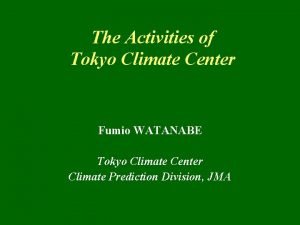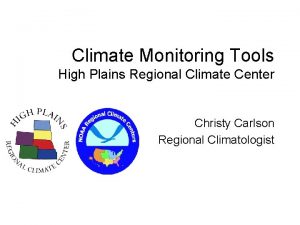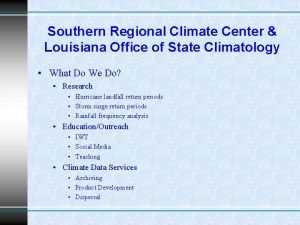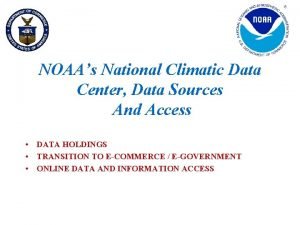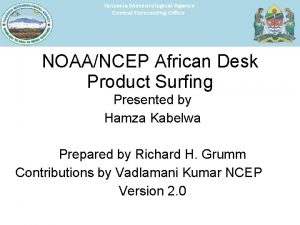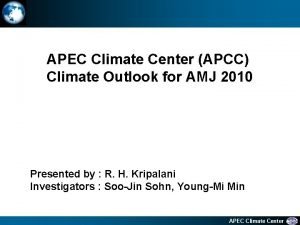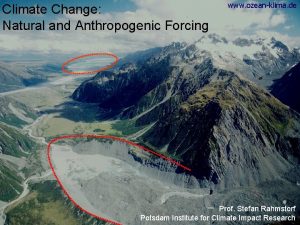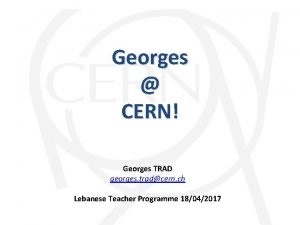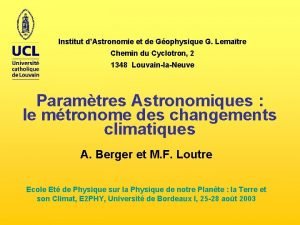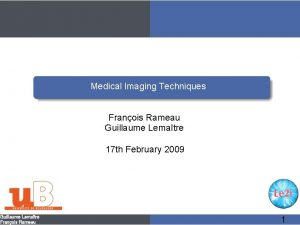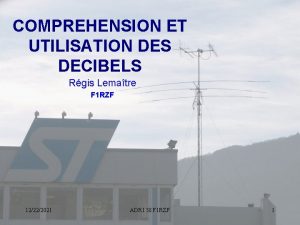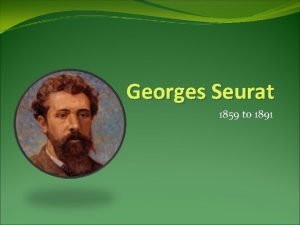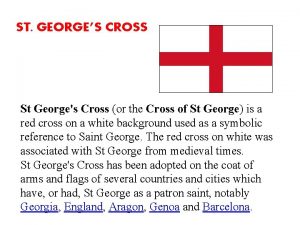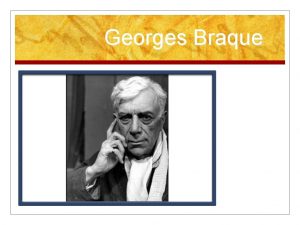Georges Lematre Center for Earth and Climate Research
















- Slides: 16

Georges Lemaître Center for Earth and Climate Research Formerly Institute of Astronomy and Geophysics George Lemaître Place L. Pasteur, 3 1348 Louvain-la-Neuve Milutin Milankovitch, the Father of Paleoclimate Modelling Milutin Milankovitch 1879 -1958 (Paja Jovanovic, 1943) André Berger Keynote lecture at Special session (Ceremony in Belgrade) and Workshop One Hundred Years of Milinkovic’s Theory of Climate Changes, 17 th and 18 th of November 2020.

1920 41 years old 1941 62 years old 1969 1998 11 and 40 years after death

LONG TERM VARIATIONS OF ASTRONOMICAL PARAMETERS Orbital, rotation, wandering of poles TERRESTRIAL INSOLATION Astronomical and Caloric MATHEMATICAL CLIMATE Conection between insolation and temperature ICE AGES Chronology and structure

ASTRONOMICAL PARAMETERS Joseph-Louis LAGRANGE (1736 -1813) 6 planets Uranus Neptune missing 1781 Pierre-Simon LAPLACE (Marquis de, 1749 -1827) celestial mechanics 1799 -1825 Philippe Gustave le Doulcet, Comte de PONTECOULANT (1795 -1874) 1834 Urbain Le VERRIER (1811 -1877) 7 planets 1855 -1856 Vojislav MISKOVITCH (1892 -1976) 1931 John Nelson STOCKWELL (1822 -1920) 1873 : 8 planets Neptune included Ludwig PILGRIM (1879 -1935) 1904

ASTRONOMICAL PERIODS Eccentricity 92 kyr (77 -103) Obliquity 40 kyr (38 -45) Climatic Precession 21 kyr (16. 3 -25. 8) Adhémar (1797 -1862) 1842 climatic precession 21 kyr calculated from astronomical precession of 50. 1’’/yr by Joseph Delambre (1749 -1822) and the rotation of the Earth’s orbit of 11. 83’’/yr by Louis Benjamin Francoeur (1773 -1849) Berger (1973 -1978) origin of all the spectral components of eccentricity, obliquity and climatic precession : 19 and 23 ky of precession (found in geol data Hays et al 1976) and 400 kyr of eccent.

INSOLATION daily and astronomical seasons Frederick William HERSCHEL (1792 -1871) 1832 (GB) Levi Whitter MEECH 1821 -1912) 1856 (US) Joseph John MURPHY (1827 -1894) cool summer 1869 (EI) Ludwig Christian WIENER (1826 -1896) 1876 (DE)

CALORIC SEASONS INSOLATION MM was willing to avoid having to take into account both the total irradiation received during the astronomical seasons (obliquity only) and their length (precession only). Caloric seasons divide the year into two equally long seasons, one of which comprises all days during which the irradiation at the given latitude is stronger than on any day of the other halfyear. Because of the law by Kepler and the semi-major axis of the Earth’s orbit being invariable, the length of these seasons are not changing with time. MM discovered these after the publication of his 1920 book. It first appeared in Köppen-Wegener 1930 and named Kanon der Erdbestrahlung-Canon of Insolation. It is Table XXV in Kanon.

For a given local season, the impact on caloric isolation of obliquity is the same in both hemispheres and maximum in the high latitudes, whereas the impact of climatic precession is opposite in the two hemispheres and maximum at the low latitudes. But caloric seasons do not solve completely the problem because their beginning changes with time and in tropical regions there are 2 maxima and 2 minima making the application of the concept of caloric seasons difficult. Moreover, the spectral behaviour of the caloric insolation is very similar to that of the average irradiance over the astronomical seasons.

Average insolation of astronomical summer at 65°N Average insolation of caloric summer at 65°N Berger and Loutre, QSR 1991; Berger, Loutre and Yin, QSR 2010

Long term variations of the 65°N equivalent latitude over the last 600, 000 years. The equivalent latitude is the latitude which receives presently the same solar energy than the 65°N latitude in the past during the same Northern Hemisphere summer caloric season. The upper curve is based on the values of the astronomical parameters calculated by Stockwell and Pilgrim and the lower curve by Le Verrier and Miskovic (Milankovitch, 1941). This curve was first published in Mathematische Kliamalehre (1930).

MATHEMATICAL CLIMATE A. Caloric insolation at a given latitude 1. Stefan law and only insolation varying: Temperature and caloric insolation (Mathematische Klimalehere 1930) In the middle and high latitudes temperature can drop by 5°C 2. Altitude of snow limit (Astronomische Mittel in 1938 Handbook der Geophysics. ) from Köppen A deficit of summer caloric radiation of 573 cu at 75°N 22 kyr ago = drop of snow limit by more than 500 m, i. e. NH cap extending to 65°N and being 2. 75 larger

B. Polar snow caps 1. Based on Wundt (1933), present-day snow cap extents to 75°N and to 55°N at glacial max. As a consequence, MM decided to compute the longterm variations of the mean summer and winter insolation per unit surface area of the Northern polar snow-cap extending to 55°N over the last 600, 000 years

2. Assuming a constant albedo and an extension of snow cap always proportional to the corresponding deficit of insolation, he found a minimum summer caloric insolation at 230 kyr with a deficit of 660 cu. As this deficit caused an extension of the snow cap of 20°, a deficit of 1 cu corresponds to an enlargement of the snow cap by 1’ 82 or 3. 37 km. This means also that the Northern snow cap can totally disappear for an increase of the summer insolation by 495 canonic units (10 kyr and 127 kyr ago).

3. Allowing the reflective power and the absorption factor of snow ice to change: which leads to a total deficit of Which is much larger than the 660 cu. With a drop of the snow line by 2180 m the cap must have reached 55°N The deficit in annual radiation is 1920 cu corresponding to a decrease of the annual temperature by 6. 4°C

Penck and Bruckner (1909), Milankovitch-Köppen-Wegener (1924), Thiede 2018

Thank You
 Climate change 2014 mitigation of climate change
Climate change 2014 mitigation of climate change Nasa center for climate simulation
Nasa center for climate simulation Tokyo climate center
Tokyo climate center Xm acis
Xm acis Xm acis
Xm acis Nndc climate data online
Nndc climate data online Cpc africa desk
Cpc africa desk Kenya climate innovation center
Kenya climate innovation center Colorado climate center
Colorado climate center Apcc climate
Apcc climate Georges braque violin and pitcher
Georges braque violin and pitcher Cheongpyeong heaven and earth training center
Cheongpyeong heaven and earth training center Ozeanklima
Ozeanklima Bjerknes centre for climate research
Bjerknes centre for climate research Cru climate research unit
Cru climate research unit Formuö
Formuö Novell typiska drag
Novell typiska drag


